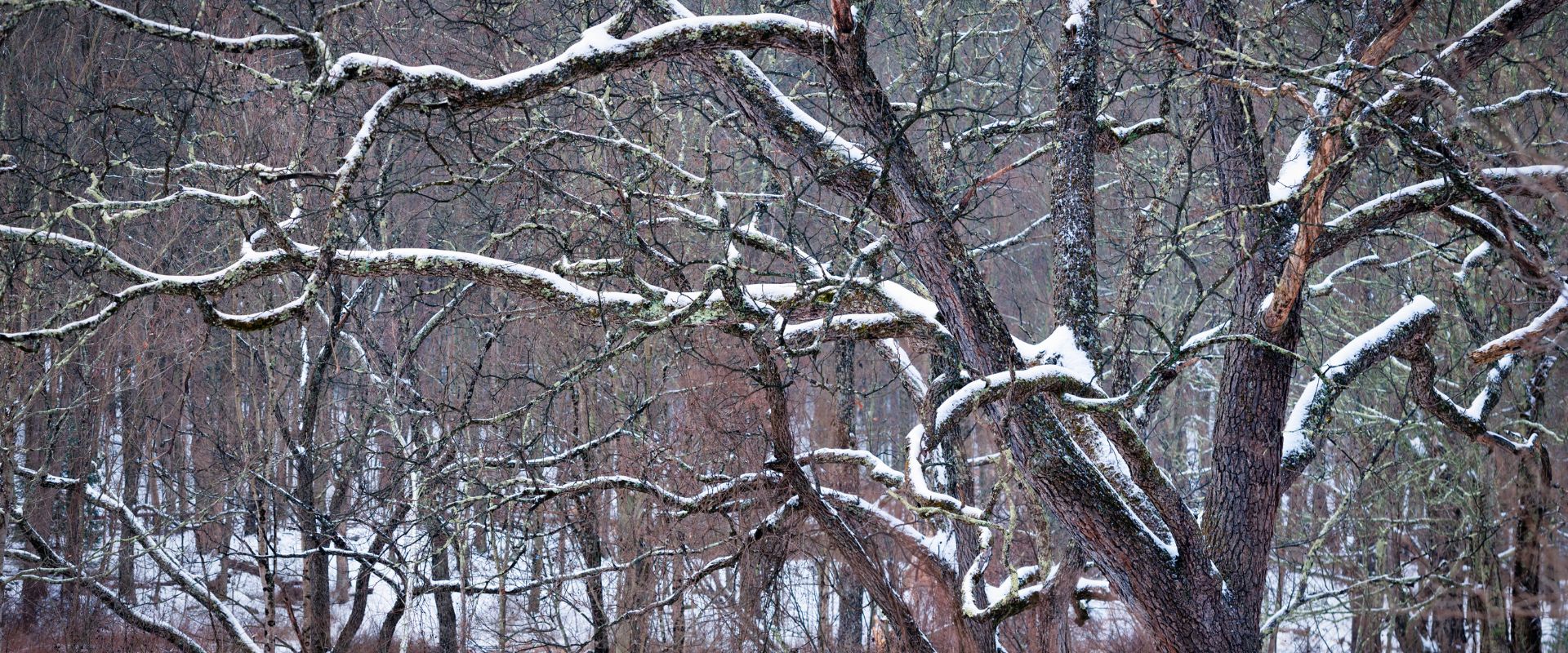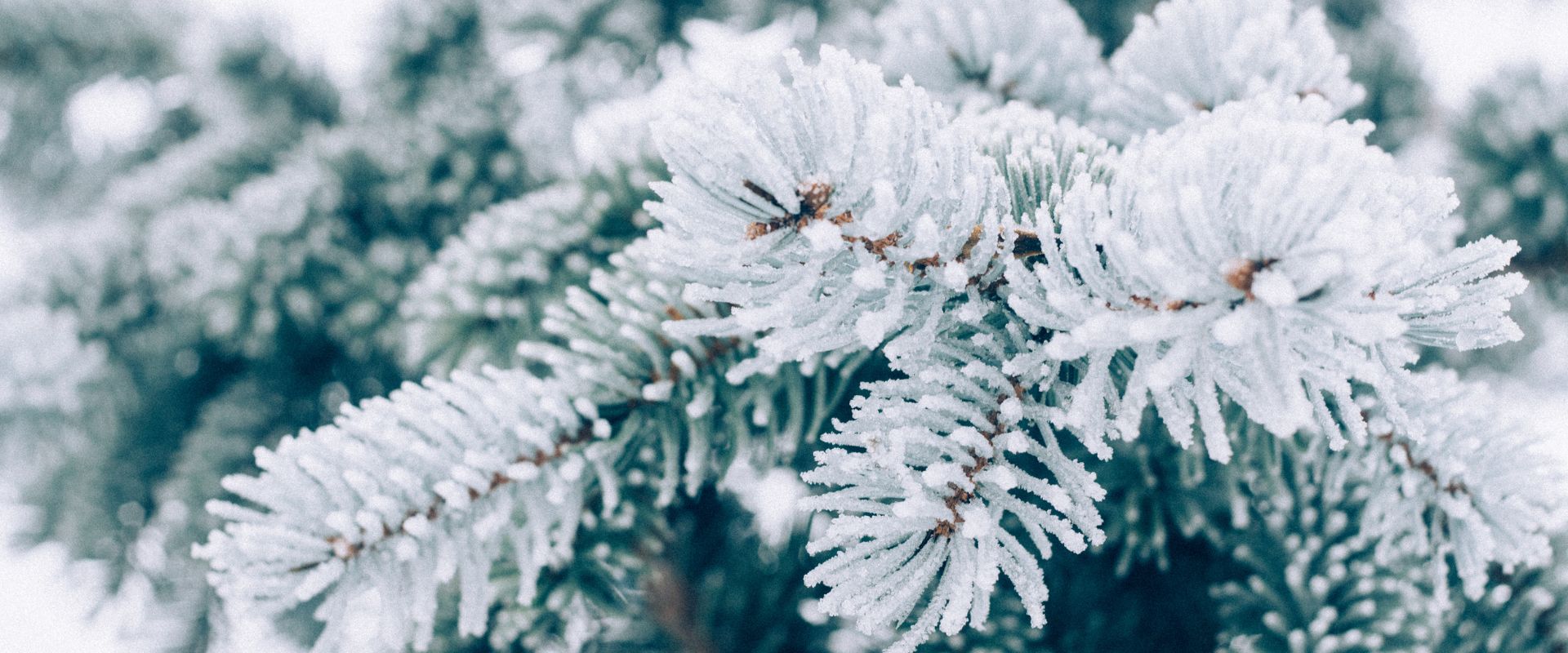Winter in Northern New Jersey brings its unique challenges, especially when it comes to caring for your trees. From freezing temperatures to heavy snowfall, de-icing salts to hydration issues, harsh winds, and hungry rodents, your trees confront many threats during the cold months. Understanding how to manage and prevent damage is crucial for their survival and long-term health.
Navigating Northern New Jersey’s Winter Chill: A Guide to Protecting Your Trees
At Aspen Tree Care, we specialize in helping Northern New Jersey homeowners safeguard their trees against the rigors of winter. Keep reading to learn the most effective strategies to keep your trees healthy and robust throughout the winter season, such as:
- Which preventive measures to take before winter arrives
- How to protect trees and shrubs from freezing temperatures
- What to do when heavy snow or ice threatens your trees
- Do’s and don’ts after a winter storm
- How de-icing salts harm your trees and what to do instead
- Why you should water your trees in winter
- Answers to common questions about winter tree care in Northern New Jersey
- And more!
Take Preventive Measures
The key to minimizing damage from snow and ice begins before winter arrives. Here’s what we recommend:
- Conduct a Pre-Winter Evaluation: Inspect your trees, especially the larger ones, for any signs of weakness. Look for broken, dead, or unbalanced branches that might succumb to winter’s load.
- Avoid Utility Line Conflicts: Ensure your trees haven’t grown into overhead utility lines. If they have, call an arborist to prune them back so as to prevent winter power outages.
- Prune Properly: Timely pruning can prevent many winter-related issues. We recommend scheduling pruning services before severe weather sets in.
- Pro Tip: Proactive pruning helps maintain your trees’ natural shape and prevents damage. It’s akin to a well-timed haircut – it can make all the difference!
Fortify Trees Against the Freeze
The onset of freezing temperatures in Northern New Jersey can pose a significant threat to the integrity of your trees, affecting them from the deepest roots to the highest branches.
When temperatures drop, the water inside a tree’s cells can freeze, causing damage such as frost cracks. These vertical fissures can appear on the trunk as the tree’s outer layer expands and contracts more rapidly than the inner wood in response to swift changes in temperature. While not always harmful, these cracks can become entry points for pests and diseases, potentially leading to further damage.
To combat this, we recommend a winterization protocol for your more vulnerable specimens. Some trees are more resilient to freezing temperatures, while others might require extra protection. To safeguard young or delicate shrubs and small, recently planted trees against the severe conditions of winter, we recommend wrapping them in burlap.
Burlap wraps can be an effective shield against biting winds and heavy snow. This protective layer should be snug yet breathable, providing a buffer against temperature extremes and frost damage.
For your larger, sturdier trees, a layer of mulch around the base acts as insulation, keeping the roots cozy during the chill. A layer 2-4 inches deep is ideal, but remember to leave a gap around the trunk to prevent moisture accumulation and decay.
Manage Snow and Ice on Trees
Snow-laden branches and ice-encrusted boughs are common sights after a winter storm, yet they can be a hazard, especially for trees with weak or brittle branches. The added weight increases the risk of branches breaking, leading to property damage or, worse, personal injury. Broadleaf evergreens, with their expansive leaf surface, bear the brunt of the burden, heightening their risk of damage.
That does not mean, however, that you should try to remove snow or ice from tree branches!
Post-Storm Winter Tree Care
After a storm, safety comes first. Here are the steps to follow:
- Safety Assessment: Check for fallen branches or trees that are blocking driveways or public pathways.
- Utility Line Hazards: If tree branches have damaged utility lines, contact your utility company immediately. Avoid trees in contact with power lines!
- Stay Clear of Danger: Never climb a tree or use a ladder for snow removal. Don’t attempt DIY tree removal, even if the tree is on the ground. Trees under load from snow, ice, or being bent or broken can react to being moved or cut with violent and dangerous force.
- Gentle Clearing: For smaller trees, gently brush off snow with a broom. Avoid standing beneath the branches during the process. If the snow or ice doesn’t budge easily, it’s safer to leave it.
- Leave Ice Alone: As for ice, patience is key—let nature take its course with the warmth of the sun.
- Don’t Shake or Hit Branches: Shaking or whacking branches with a shovel or rake can cause more harm than good. It’s best to let snow and ice melt naturally.
For those hard-to-reach areas, or when in doubt, Aspen Tree Care’s professionals are at your service, ensuring safety and preserving the health of your trees.
Mitigate the Effects of De-Icing Salts on Northern New Jersey Trees
As residents of Northern New Jersey, we’re all too familiar with the icy grips of winter. To combat this, we often rely on de-icing salts for safe passage on driveways and sidewalks. However, it’s vital to consider the silent toll these salts may take on our trees and landscapes.
The runoff from de-icing agents can percolate through the soil, altering its composition and disrupting the delicate balance of moisture and nutrient uptake by trees. This can lead to “salt burn,” manifesting in dried-out, brown foliage and stunted growth.
In the face of such challenges, Aspen Tree Care advocates for the use of eco-friendlier alternatives to traditional salts. These alternatives are effective in keeping pathways clear without compromising the verdant legacy of your trees. By embracing such solutions, we not only ensure immediate safety but also the enduring vitality of our trees come spring.
Taking a few extra precautions can help ensure your trees survive the winter unscathed and are ready to flourish in the spring.
Winter Hydration Tactics for Robust Trees
During the frosty months, ensuring your trees are properly hydrated is integral to their resilience. The best time for winter watering is on those milder days when temperatures rise above the freezing point, allowing the soil to thaw and absorb water. To ensure you’re watering just right, periodically examine the soil surrounding your trees. It should feel moist, but not overly saturated.
It’s especially important to look after newly planted or young trees with less established root systems, as they are more vulnerable to winter damage.
Desiccation, or winter dehydration, is always a concern during winter as cold winds can strip moisture from plants faster than it can be replenished from the frozen ground. This is particularly true for broadleaved evergreens, which retain leaves year-round and thus, have more surface area from which to lose moisture.
To counteract winter desiccation, we recommend you take the following proactive measures:
- Ensure your trees are well-watered before the onset of freezing temperatures to ensure they have sufficient moisture reserves as they head into winter.
- Apply a layer of mulch around the base of your plants to conserve soil moisture and stabilize soil temperatures.
- Apply anti-desiccant sprays to form a protective layer that reduces water loss from leaves.
- Avoid pruning late in the growing season to prevent stimulating tender new growth that can sap a plant’s winter resilience. Wait until trees and shrubs are fully dormant before pruning.
In the Zone: Understanding New Jersey’s Climate Zones
Not all trees and shrubs can be grown successfully in Northern New Jersey. Others can be grown but require special care to survive the winter. And still others are quite hardy in our region but will need coddling during their first winter, particularly if they were planted late in the season and have not yet become established.
Selecting the right plants for your New Jersey garden means understanding the USDA hardiness zones that crisscross our state. From Zone 6’s moderate growing seasons in the north to the slightly warmer Zone 7 as you head south, each offers a unique horticultural playground. Much of Passaic and Morris counties are in Zone 6, while Bergen and Morris counties fall primarily into Zone 7.
Zone 6 is where Lilacs, Hydrangeas, and the American Beautyberry thrive, creating a garden with structure and aromatic allure. The versatility of Zone 6 allows for a diverse array of annuals and perennials, as well as spring-blooming bulbs.
Transitioning to Zone 7, opportunities for gardening flourish with evergreen shrubs like Rhododendrons and Camellia, alongside deciduous trees like Dogwood and Coral Bark Maple that provide a carousel of seasonal hues. Conifers like spruce, juniper, and pines, adaptable to both zones, ensure a constant presence of green throughout the changing seasons.
Take stock of your landscape shrubs and trees before winter’s snows descend. If you’re “pushing the zone” by growing plants that may not be fully suited to your hardiness zone, take precautions by providing winter protection. Protect any plants installed late in the growing season with a thick layer of mulch.
Frequently Asked Questions
Q. How does the shorter daylight during winter affect my trees?
A. Did you know trees can sense the shorter daylight hours? Fewer daylight hours slow down your tree’s growth and metabolic processes, causing it to enter dormancy, a state akin to animal hibernation.
Q. What are some of the specific tree varieties in New Jersey that are more vulnerable to winter conditions?
A. Certain tree varieties like Japanese maple, dogwood, and blooming cherry are more susceptible to harsh winter conditions in New Jersey. They require extra care to survive the cold, windy, and often snowy winters.
Q. How can wildlife impact the health of my trees during winter?
A. Wildlife can impact your tree’s health during winter. Animals like squirrels and deer might gnaw bark for nourishment, potentially damaging trees. Rodents might burrow near roots for shelter, causing structural instability. Using wraps and barriers on vulnerable trees and shrubs can discourage animals from inflicting this damage.
Q. What should I do if my tree is damaged by snow or ice?
A. If your tree sustains serious damage, have the arborists at Aspen Tree Care inspect it for safety risks. Not all damage needs to be addressed immediately; if it can wait until spring, we’ll let you know. However, if the tree poses an imminent threat, we’ll recommend removing it as soon as possible.
Winter Woes? Call Aspen Tree Care!
As the winter wonderland unfolds in New Jersey, our trees face significant challenges, from freezing temperatures to heavy snowfall and the harsh effects of de-icing salts. Navigating these issues requires more than just a basic understanding of tree care; it demands expertise and precision, especially when protecting young or vulnerable trees from the risk of desiccation and other winter damages.
This is where Aspen Tree Care steps in. Our team of experts is not just equipped to address these challenges, but we’re also dedicated to being a valuable educational resource for our community. We understand the unique needs of Northern New Jersey’s diverse climate zones and offer tailored solutions to ensure your trees not only survive but thrive through the winter months.
If you’re grappling with snow or ice removal, concerned about salt damage, or seeking guidance on tree hydration and care, reach out to Aspen Tree Care. Let us be your trusted partner in maintaining a healthy, vibrant landscape. Call us today at 201-939-8733 for a consultation and give your trees the professional care they deserve.








